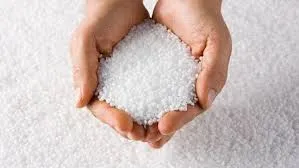The Importance of Plastic Stabilizers in Material Science
Plastic stabilizers are essential additives used in the production of various plastic materials, ensuring longevity, durability, and optimal performance. These stabilizers play a crucial role in enhancing the properties of plastics, helping them resist degradation from environmental factors such as heat, light, and oxidative conditions. As industries continue to evolve—embracing sustainability and improved performance—understanding the significance of plastic stabilizers becomes increasingly critical.
One of the primary functions of plastic stabilizers is to provide thermal stability. During the processing and application of plastics, they are subjected to high temperatures that can lead to the breakdown of polymer chains. This thermal degradation often results in a loss of mechanical properties, discoloration, and a reduction in the overall viability of the final product. Thermal stabilizers, which often include organometallic compounds such as metal stearates, are employed to absorb heat and inhibit unwanted reactions, thereby allowing plastics to retain their desirable attributes throughout their lifecycle.
In addition to thermal stability, UV stabilizers play an integral role in protecting plastics from the damaging effects of ultraviolet (UV) radiation. Certain plastics, such as polyvinyl chloride (PVC) and polyethylene, are particularly vulnerable to UV-induced degradation. This degradation can result in brittle materials and compromised aesthetic qualities, such as fading or yellowing. UV stabilizers, including hindered amine light stabilizers (HALS) and UV absorbers, effectively dissipate UV radiation, prolonging the life of plastic products that are often used in outdoor applications.
plastic stabilizers

Another critical aspect of plastic stabilizers involves their ability to counteract oxidative degradation. Oxidation can occur when plastics are exposed to air, moisture, or elevated temperatures, leading to increases in brittleness and declines in structural integrity. Antioxidants, such as phenolic compounds and phosphites, are common additives that inhibit these oxidative reactions, ensuring that plastics maintain their mechanical properties over time. By integrating antioxidants into plastic formulations, manufacturers can significantly enhance the longevity of their products, meeting both consumer demands and industry standards.
Sustainability is another significant aspect of modern plastic production, and stabilizers play a role in this area as well. As industries look for greener alternatives and ways to reduce their environmental footprint, bio-based and biodegradable stabilizers are gaining popularity. These eco-friendly additives not only offer stabilization benefits but also align with the global push towards sustainability. By integrating these alternatives into their products, manufacturers can appeal to environmentally conscious consumers while upholding performance standards.
Moreover, the versatility of plastic stabilizers allows them to be tailored for specific applications. Whether in automotive parts, packaging materials, or consumer goods, different types of stabilizers can be utilized depending on the requirements of the end product. Research and development in this field continue to push boundaries, leading to innovative stabilizer solutions that cater to the ever-evolving demands of modern applications.
In conclusion, plastic stabilizers are vital in ensuring the performance and longevity of plastic materials. With their ability to provide thermal stability, UV protection, and oxidative resistance, these additives enhance both the durability and functionality of plastics in various applications. Furthermore, as the focus on sustainability intensifies, the development of eco-friendly stabilizers offers exciting opportunities for the future of the plastic industry. Understanding and implementing plastic stabilizers will not only ensure that products stand the test of time but will also contribute to a more sustainable and responsible manufacturing landscape. As we move forward, it is imperative for stakeholders in the plastic sector to embrace these innovations and continue exploring the potential of stabilizers in enhancing material performance.

